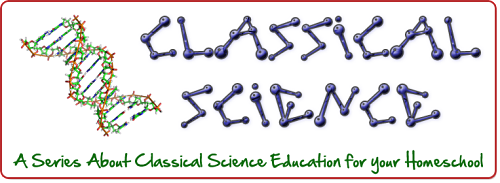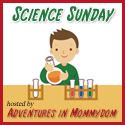Intro To Science – Kindergarten Science Curriculum Review
This past week, The Homeschool Scientist has spotlighted Science and Classical Education with the help of educator and science author, Paige Hudson. She has given us fabulous information and insight for every stage of classical education, as well as great science education advice for those of us who do not follow the classical education model.
If you classically educate, you might be wondering what science curriculum Paige recommends. Paige has written a wonderful, hands-on science curriculum, Elemental Science, that wonderfully complements classical education and that can be used by other educators as well.
I have been on the lookout for a science program for early learners (Kindgergarten-1st grade). I get requests for science information for that age group all the time. When Paige told me about her Intro to Science program, I asked her if I could review it and share it with my readers. I’m so happy I did. This is a great curriculum!
The Curriculum
Intro To Science is a simple, hands-on science program that builds upon a weekly concept. It gives a 2-day and a 5-day scheduling option and is scripted to make it easy for parents to teach. Outside resource books are used to allow you to go as deep into the subject as you want. I could totally see this being used for slightly older children, as well.
An Example Experiment
To introduce the concept of solids and liquids, Intro to Science suggests this experiment. Place an ice cube and a crayon on a plate. They are both solids, but keep observing. Is one changing? What is it becoming? The ice is melting and changing from a solid to a liquid. The crayon is staying a solid.
 Ask your child what is making the ice change from a solid to a liquid. Obviously, the temperature of the room is above the freezing point of water so the heat of the room is making the ice melt. Ask them if a crayon could change to a liquid and how that might happen.
Ask your child what is making the ice change from a solid to a liquid. Obviously, the temperature of the room is above the freezing point of water so the heat of the room is making the ice melt. Ask them if a crayon could change to a liquid and how that might happen.
Put the crayon in a muffin tin and place it in the oven for a few minutes. Pull the pan out of the oven and notice the change. Did heat change the crayon? Is it still a solid? Explain how the oven temperature is above the melting point of the crayon, so the heat of the oven caused the crayon to change to liquid just like the ice cube did. When the crayon is left at room temperature, the liquid crayon cools below the melting point and becomes a solid again. (My kids like to do this experiment using their Crayola Crayon Maker.)
This concept of heat changing solids to liquids -melting- is an important one to grasp. Make a list with your kids of solids that can melt into liquids and those solids that cannot.
More Elemental Science
Each weekly unit of Intro To Science contains experiments and activities just like the one above. They inspire thought and wonder as well as teach important science lessons. Intro To Science can be ordered in print form or download at very affordable prices. An experiment supply kit is also available.
Elemental Science, also, has pre-k science, biology, chemistry, earth science and astronomy and physics programs perfect for any type of home educator.
Thank you Paige for introducing us to Science in Classical Education this week and science lessons we can all learn from!
I hold a master’s degree in child development and early education and am working on a post-baccalaureate in biology. I spent 15 years working for a biotechnology company developing IT systems in DNA testing laboratories across the US. I taught K4 in a private school, homeschooled my children, and have taught on the mission field in southern Asia. For 4 years, I served on our state’s FIRST Lego League tournament Board and served as the Judging Director. I own thehomeschoolscientist and also write a regular science column for Homeschooling Today Magazine. You’ll also find my writings on the CTCMath blog. Through this site, I have authored over 50 math and science resources.




